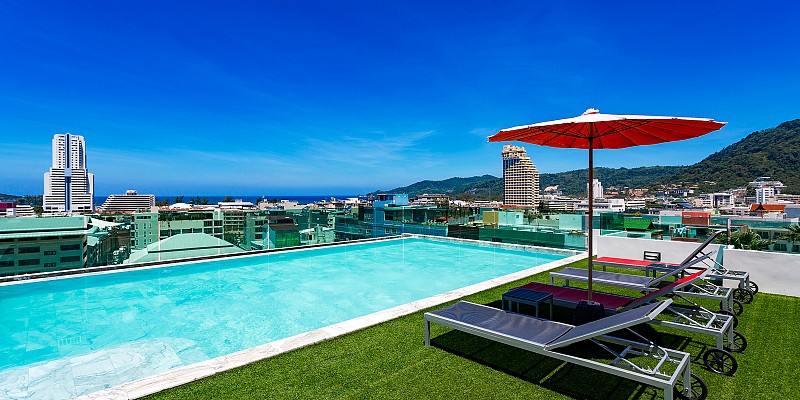mahatma phule mandai pune
Description
Mahatma Phule Mandai, Pune: A Detailed Traveler’s Guide
Overview
Mahatma Phule Mandai is the everyday stage of old Pune. It is where farmers, porters, shopkeepers, and families meet at dawn, trade fast, and move on with purpose. Visitors come for more than shopping.
They come to watch the city’s routine, hear the calls of vendors, and see how food reaches Pune’s kitchens. Plan for one to two hours. Arrive early for the best light, freshest produce, and a calmer flow of people.
Historical Background
The market grew from a need to organize a growing city in the late 19th century. Before the building rose, trade took place on open, crowded, and messy grounds. Civic leaders set out to build a central, hygienic space for wholesale and retail. Construction took place across the 1880s, with accounts noting different dates and project leads.
Early records refer to the site as Reay Market or Bombay Market. In the mid-20th century, the city renamed it for Mahatma Jyotirao Phule, a reformer who stood for education, equity, and farmers’ dignity. The renaming aligned a colonial-era landmark with local values and the everyday work of growers and traders who keep Pune fed.
Architectural Significance
The building is a model of climate-wise civic design. Thick basalt stone walls keep heat out. White Porbandar stone highlights arches and edges. A tall octagonal clock tower anchors the plan. From this hub, eight long wings radiate like spokes. Large arched entrances ease movement for handcarts and people.
Inside, cast-iron columns support high tiled roofs. A clerestory and vented gables pull air through the hall, keeping produce cool without machines. The design feels sturdy, legible, and efficient, with light that shifts throughout the day and turns stacks of vegetables into powerful visual scenes.
Market Culture and Daily Life
Work starts before sunrise. Trucks and tempos unload sacks of onions and potatoes. Vendors rinse floors, arrange crates, and set up hand scales. Early buyers scan quickly, pick the best lots, pay, and leave. By mid-morning, families arrive for weekly shopping. Regulars greet vendors by name. Bargaining is brief and polite.
Many stalls accept QR payments, but cash remains faster during rush hours. The rhythm is steady: deliveries, sorting, weighing, selling, restocking. Step aside when you hear a porter’s call; they move heavy loads and keep the lanes flowing.
What You Will Find
Vegetables and Fruits
Expect lanes dedicated to greens, gourds, tomatoes, root crops, citrus, and bananas. Season sets the mood. Summer brings mangoes; winter brings peas and a range of greens; post-monsoon brings crisp herbs and tender vegetables.
Spices and Dry Goods
Sacks of turmeric, cumin, mustard seeds, and chilies line narrow aisles. Some vendors custom-mix masalas for specific dishes. You also find lentils, rice, jaggery, and dry fruits in travel-friendly packs.
Flowers and Puja Supplies
Marigold garlands, lotus buds, incense, and camphor are ready by dawn for nearby shrines and morning rituals.
Tools and Homeware
Steel utensils, strainers, storage tins, and earthen pots are practical buys that fit easily in a day bag.
Street Snacks and Tea
Around the edges, tea stalls pour cutting chai into glass tumblers. You will spot quick bites like bhajis and chakli if you need a pause.
Best Time to Visit
Dawn to 10 am is ideal. Light is soft, aisles are navigable, and selection is widest. Late morning is busier with family shoppers. Afternoons slow down; some sections thin out or close. On festival days, come earlier than usual to avoid bottlenecks and to see special displays of flowers, coconuts, fruits, and puja items.
A Short Self-Guided Route (60–90 Minutes)
1. Tower Entrance
Stand under the clock tower for a quick look up, then step into the central verandah. The view helps you map the eight wings and pick a direction.
2. Leafy Greens Wing
Watch vendors rinse and stack coriander, mint, and curry leaves. Buy a small bunch to experience how sellers tailor to your brief.
3. Fruit Lanes
Ask for the day’s best lots. Vendors will guide you toward the right ripeness for immediate eating or for later in your trip.
4. Puja Stalls
Pause at the garland counters. The scent, color, and pace here are distinct. If you are buying, mention if you need blooms for a day or for travel.
5. Spices and Staples
Pick compact packets of masalas, jaggery, or nuts. These pack well and are easy to carry.
6. Tea Break Outside
Finish with a glass of cutting chai before you exit. It is part of the routine and a good moment to take stock.
Etiquette for Visitors
Greet briefly and warmly. Ask before touching produce. If you say what you plan to cook—kanda bhaji, sambar, bharta—vendors will select a suitable variety or ripeness. Bargain lightly; expect a modest discount at most. Keep small notes ready; it keeps queues short. When you stop to look or take photos, stand to the side and avoid blocking the scales or the aisle.
Photography Tips
Come early for soft, angled light through the clerestory and arches. Use the tower and long aisles as strong frames. Ask before shooting close-ups of people. Buy a little from the stall you photograph; it builds goodwill. Keep bags zipped and gear tight to your body. Space is narrow, and people are working; shoot a few frames and move on.
Safety, Comfort, and Accessibility
The market is crowded yet friendly. Keep your wallet in a front pocket or a zipped bag. Floors can be damp from rinsing; wear closed shoes with a good grip. Entrances are wide, but aisles compress at peak hours. Mid-afternoon offers more space, though less variety. If you buy a lot, hire a porter and agree on a fee upfront.
Food Safety and Packing
Choose cut fruit only from busy, clean counters. In hot weather, carry a small insulated pouch for greens and delicate fruits. Rinse produce at your stay. Skip raw sugarcane juice unless the stall is clearly clean and has a high turnover with fresh ice and filtered water. For travel, favor dry goods, spices, and sealed snacks over fresh items that bruise or spoil.
Festival Seasons and Community Life
Mandai changes tone with the calendar. During Ganesh season, fruit pyramids grow taller, and puja lanes turn into seas of marigold and mango leaves. Diwali brings lamps, rangoli powders, and festive snacks. Outside the building, the plaza often becomes a stage for processions, speeches, and community programs.
The market has long served as a civic center for meetings, cultural shows, and local campaigns. This social role—part public square, part pantry—explains why the market still draws every slice of the city, from senior home cooks to young professionals, chefs, students, and politicians.
How the Design Shapes the Experience
Architecture and daily function reinforce each other. Eight wings split the bustle into manageable streams. Arches pull in light and make lanes easy to scan from a distance. The tower is a constant point of orientation; if you feel turned around, face it and reset your path. Airflow keeps producing fresh air and tempers the crush of bodies. The result is order inside motion: quick deals, clear sightlines, and air that moves even on humid days.
Buying Guide by Season
Summer
Alphonso and Kesar mangoes, tender cucumbers, watermelons, and cooling herbs. Ask vendors how many days till peak ripeness and plan snacks or salads around that window.
Monsoon
Leafy greens abound. Look for crisp stems and a fresh scent. Bring an extra bag; greens are light but bulky.
Post-Monsoon to Winter
Peas, carrots, radishes, and a wider set of greens arrive. This is a strong time for masala shopping too, as many households make winter pickles and snacks.
Year-Round Staples
Onions, potatoes, tomatoes, lemons, bananas, and coconuts. Prices swing with harvests and fuel costs. Buy small, compare quickly, and spread purchases across two or three stalls.
Responsible Travel Tips
Bring your own tote. Buy only what you can use. Choose local and seasonal items over long-haul produce. Keep photos respectful. Tip porters fairly for heavy loads. Support stalls that keep their space clean and waste as little as possible. These small choices keep the market healthy for vendors and visitors alike.
Getting There and Practical Notes
Auto-rickshaws know “Mandai” by name. Buses stop nearby in Shukrawar Peth. Parking is tight; if you must drive, park farther out and walk in. Drink water before you enter; you may end up staying longer than planned. Restroom options around the market are basic; plan a cafe stop before or after your visit. Keep a change and a short list handy; both save time in crowded aisles.
Glossary for Quick Chats
Kanda: onion
Batata: potato
Kothimbir: coriander
Mirchi: chili
Kakdi: cucumber
Papad: crisp wafer
Gul (Jaggery): unrefined cane sugar
Why Mandai Belongs on Your Pune Itinerary
This is not a museum of the past. It is a working market that adjusts to seasons, festivals, and the week’s needs while holding on to its core: fair prices, fresh goods, and respect for time. The building’s stone and iron frame a daily drama of sourcing, sorting, weighing, and selling that has shaped how Pune eats for more than a century.
Visit at dawn once, visit on a festival morning again, and return on a quiet weekday; each visit will show a different face of the same place. You leave with food in your bag and a clearer sense of how a city takes care of itself, one quick, cheerful transaction at a time.




















